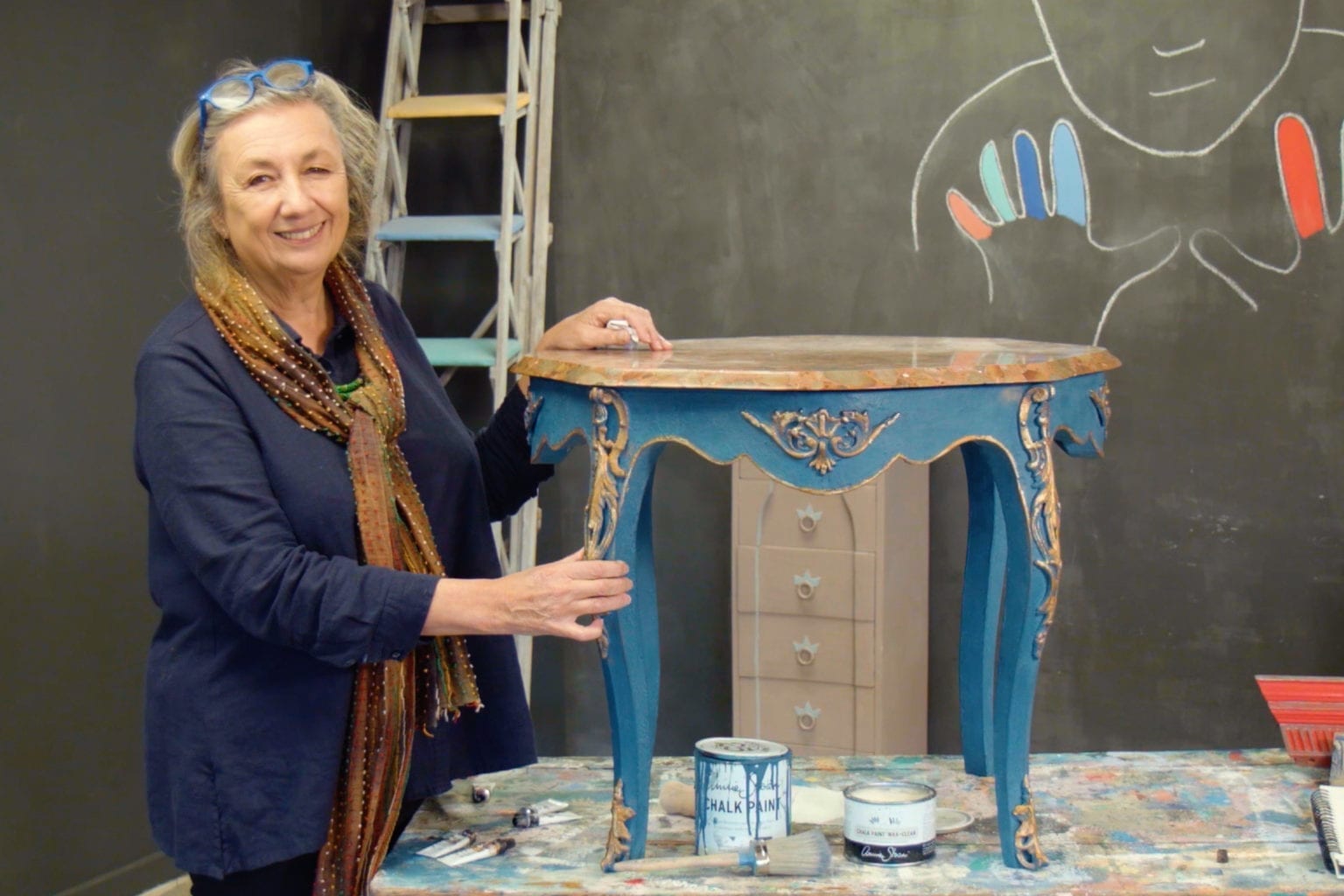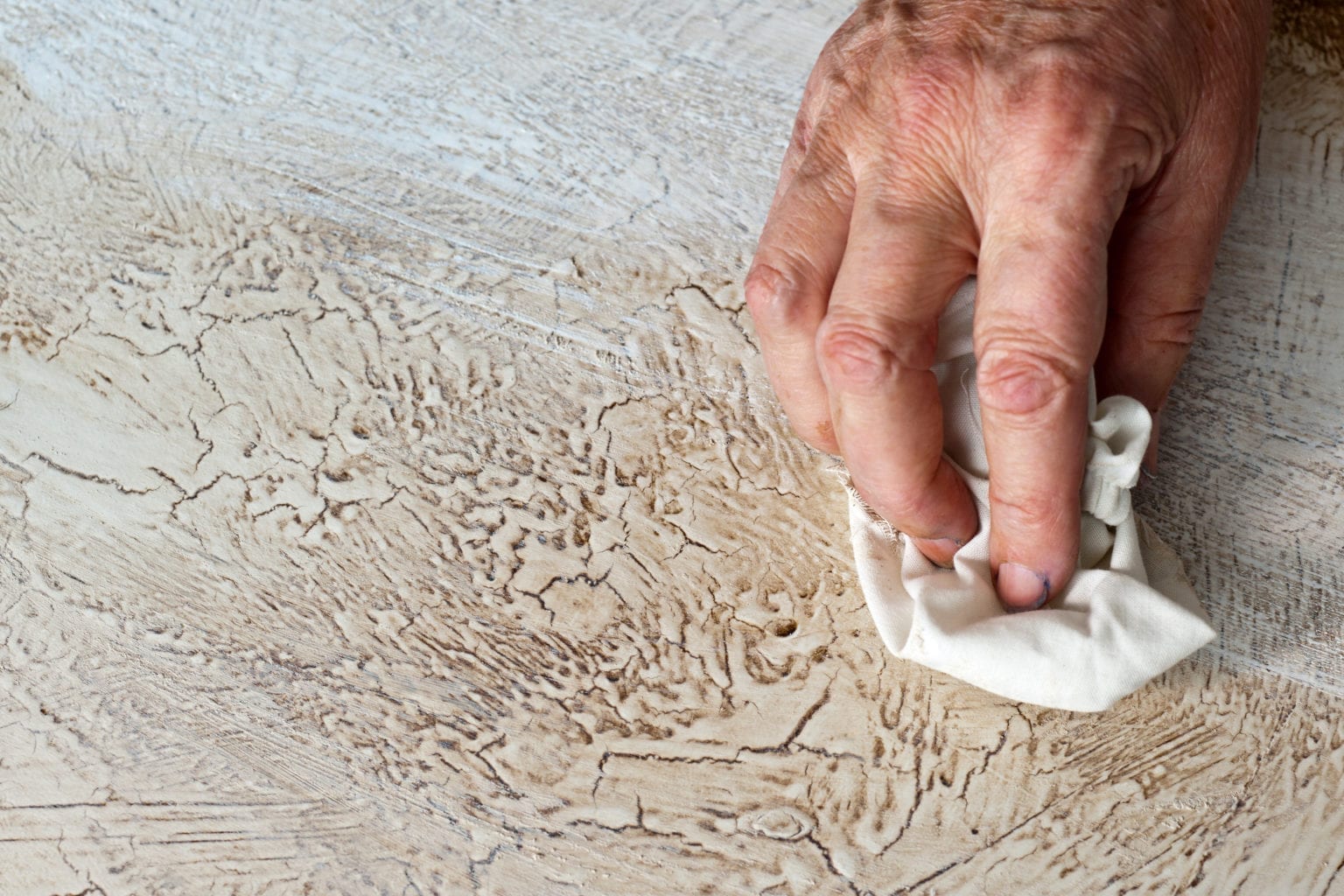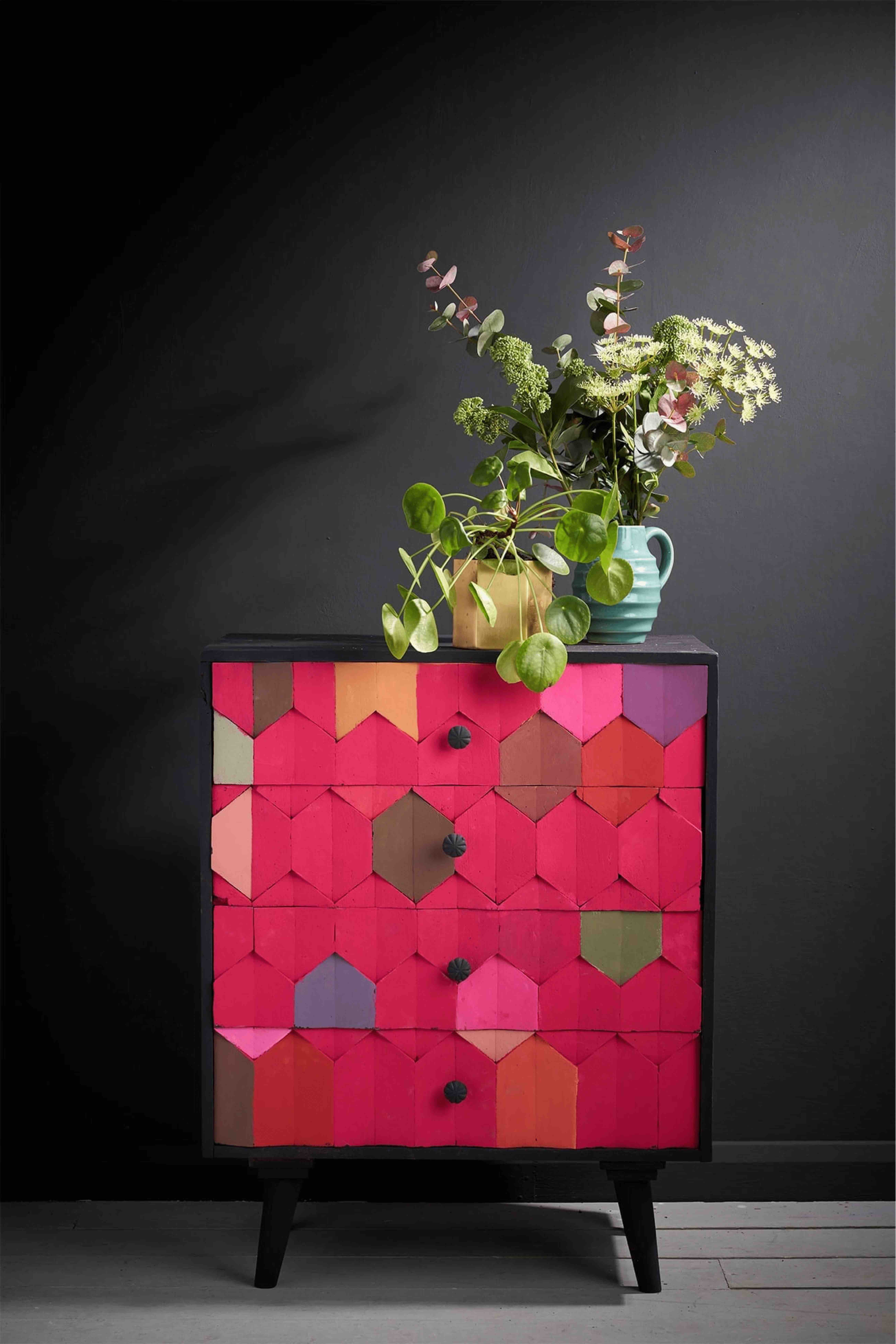If there’s one technique that Annie Sloan returns to time and again, it’s the two-colour distress method she developed right when she first created Chalk Paint™. In just a few simple steps, you can create an authentic distressed effect. Make it your own with your choice of colours and the amount of sanding you go for. Like uncovering layers of paint on an old piece of furniture, this effect gives the illusion of paint work that has been enjoyed for decades. But instead of waiting generations, you can achieve this vintage look in the matter of hours!
Choose two colours from the Chalk Paint™ palette. You can be quite playful with your colour choice, perhaps using something quite bright as a base coat. But there’s no reason not to stick with a more muted, traditional palette.
Step by step guide to the two-colour distressed paint effect
- Apply your base colour using a Chalk Paint™ Brush, moving the brush in every direction to create texture. You want this coat to be quite thick and our brushes hold lots of paint to help with that.
- Once your base colour is dry, use a clean Chalk Paint™ Brush to apply the second colour. This coat can be thinner than the first to make it easier to sand through to the base colour.
- Once dry, add a coat of Clear Chalk Paint™ Wax. You can do this with a lint-free cloth but a Chalk Paint™ Wax Brush will make it easy to get into any carvings or details.
- Remove any excess wax using a lint-free cloth.
- Once the wax is dry to touch, but hasn’t hardened, you can start sanding. Using sanding pads, remove the top coat of paint to reveal the colour beneath. Start with a coarse pad and move down to medium and then fine. Your choice of sanding pad depends on the furniture you’re painting and how distressed you want your paint work. For the most authentic distressed effect, concentrate on edges and corners – or any areas that will naturally see wear and tear. You might even want to sand all the way back to the original surface in some places.
- Wipe away any sanding dust and apply a final coat of Clear Chalk Paint™ Wax. This will seal and protect this piece.
- Allow the wax to cure (harden) before use. It will be touch dry within 24 hours, but will take up to 2 weeks to fully harden. You can use it during this time, just be gentle.
Creating a distressed paint effect is simple with Chalk Paint™, but the real creativity will come out in your colour choices and the way you sand the finished piece. Most importantly, have fun with it! Your brushstrokes and the way you sand back the paint are what will make your piece unique to you and your home. Say goodbye to mass-produced, anonymous furniture and hello to something that is as uniquely yours as that beautiful old piece of furniture that has been handed down through your family for generations.
Ready to try this for yourself? Remember to support local by buying Chalk Paint™ from your closest Annie Sloan Stockist. When you’re done, take a picture of your finished two-colour distressed project and share it with the Annie Sloan community using #AnnieSloan.


